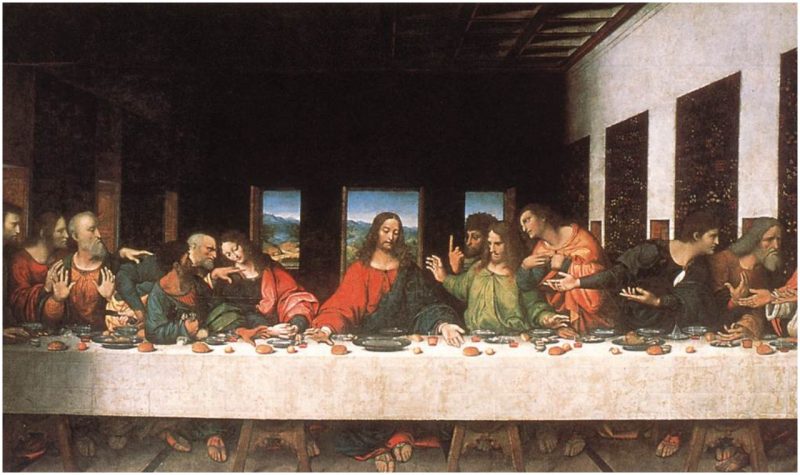Leonardo da Vinci’s Mona Lisa is famous for a number of reasons, including her enigmatic smile. But the master’s painting of the still unknown woman is not the only work of his full of mystery.
Perhaps his greatest work, The Last Supper, which depicts Jesus’ last meal with his disciples and which adorns the wall of the Santa Maria della Grazie church in Milan, is also an enigma and filled with hidden meaning.
Here are some of the hidden meanings in The Last Supper, some of which are still being debated over five hundred years after its creation:
“John” may be Mary Magdalene
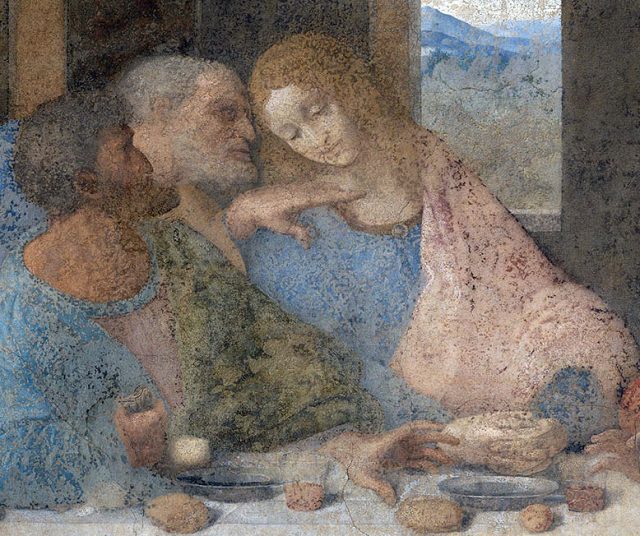
At the right hand of Jesus in the painting is the disciple John, claimed by some biblical scholars to be “the disciple whom Jesus loved” in the book bearing his John’s name. But take a closer look at “John”.
Many art and biblical scholars actually believe the person at the right hand of Jesus in the painting is a woman, most likely, Mary Magdalene. He/she is the only person in the picture wearing a necklace/pendant/charm – and not a small one, either. Many say this shows the person is most likely a woman, and at the very least, not John.
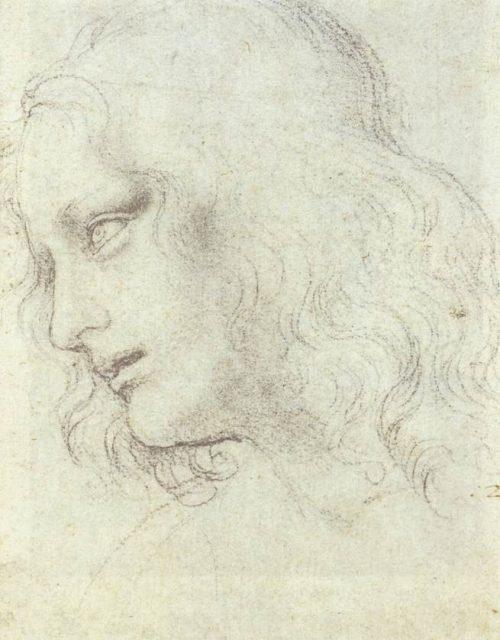
Many believe that medieval Christian leaders, seeing the woman in the picture, made a conscious effort to call the figure “John”, otherwise there is not a full tally of disciples, and a woman is sitting at the right side of Jesus, the most preferred and honored place.
You can also see that many of the figures on the right side of the table seem to be talking to or at Mary, and Jesus appears to be engaged with those on the left, who reflect the concern the disciples must have felt when told one among them would betray Christ. Look closer at “John” and you’ll see a resemblance to Mona Lisa, which was painted five years later.
Leonardo might have been sending a numerological message
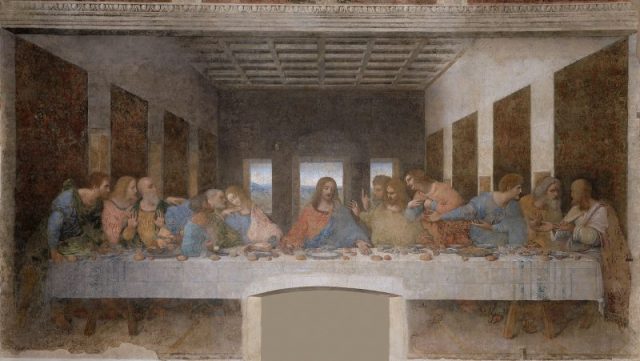
In the Book of Matthew, Jesus says that the one who dipped his hand into the bowl with him is the “betrayer”. In the Middle East/Mediterranean of the time, in Leonardo’s time, and in some places today, many times there is a single bowl on the table holding a sauce or olive oil.
Each person at the table takes a turn to dip their bread into it. Most times, this is a circular table with a bowl or pot at the center. Leonardo placed Christ and the Disciples at a rectangular table. This lends itself to a better view and is an artistic convention at the time, but did Leonardo do it for another reason?
To dip your bread while the person before you is doing it is highly disrespectful, and can be taken that the person doing it thinks he is better than those before him. In the painting, Judas has also knocked over the salt, bringing bad luck.
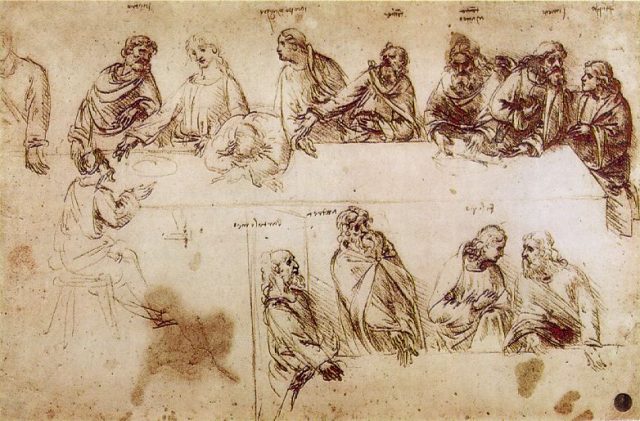
Finally, da Vinci had those at the table sitting in a pattern: 33133. Consider this: da Vinci ignored convention in his creation by not placing halos above Jesus and his followers.
He also may have placed a secret message with his grouping of the people in the painting. In the Bible, Jesus tells the Disciples to drink his blood (wine) and flesh (bread) in remembrance of him.
Related Video: Exhibition of Leonardo Da Vinci Designs at Science Museum:
https://youtu.be/dtCairKbsL8
He further says that only those that do will have eternal life. Some scholars believe that Leonardo, who was not only a skeptic and a scholar, but a man who was accused of homosexual acts as a young man in Florence. At the time, this assuredly would have put his redemption in heaven at risk. By placing the disciples and Jesus in the 33133 group, some argue that Leonardo was pointing to Lamentations 3:31-33 “For no one is cast off from the Lord forever.”
Judas is painted in a stereotypical way to depict Jews and is obviously outside the “circle”
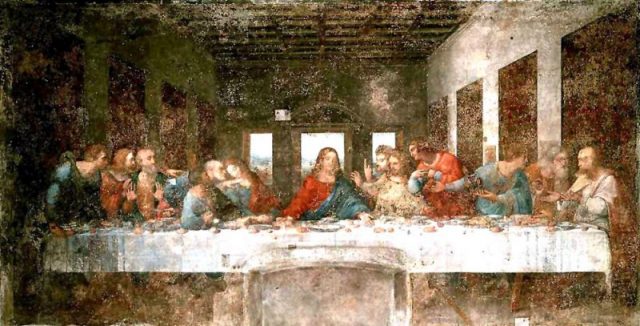
Look at the painting. Among all of the people, Judas (to the right of Jesus and “John”) is the only one with dark skin and a crooked nose, both prejudicial ways to portray Jews both before Leonardo and since.
Judas is also seen with the bag of money prominently placed in front of him (in John 12:6 it states that Judas was a thief, not to mention the thirty pieces of silver paid to him to betray Jesus), and milk in his glass, and not the wine that everyone else is drinking, placing him outside of the inner circle and indicating his fall from grace.
Read another story from us: 5 Famous Paintings with Crazy Hidden Images
If Judas had been drinking wine, which Jesus clearly indicates is his “blood” and the way to salvation, he would have been forgiven, but Leonardo reflects Judas’ station as an outsider and unforgiven.
